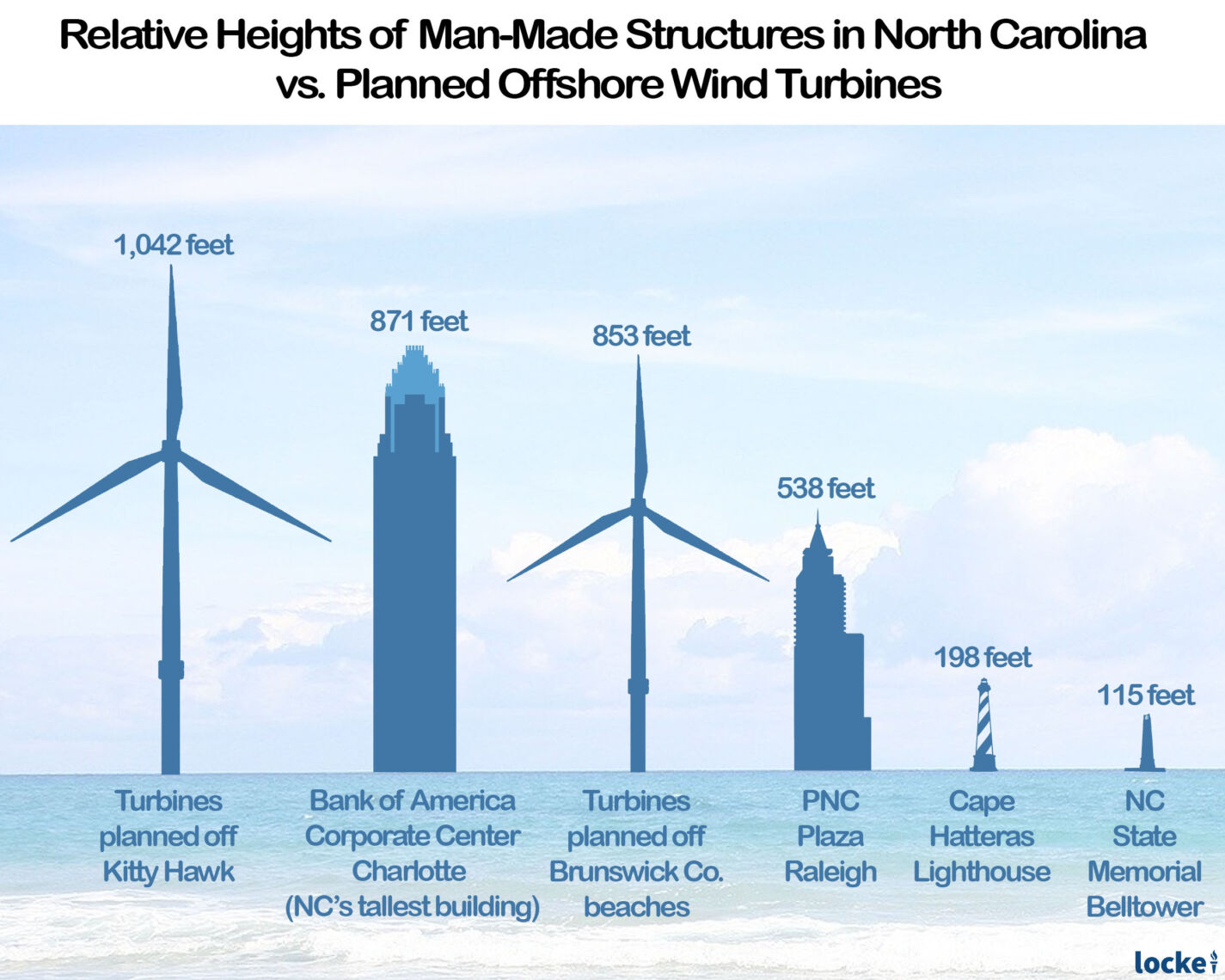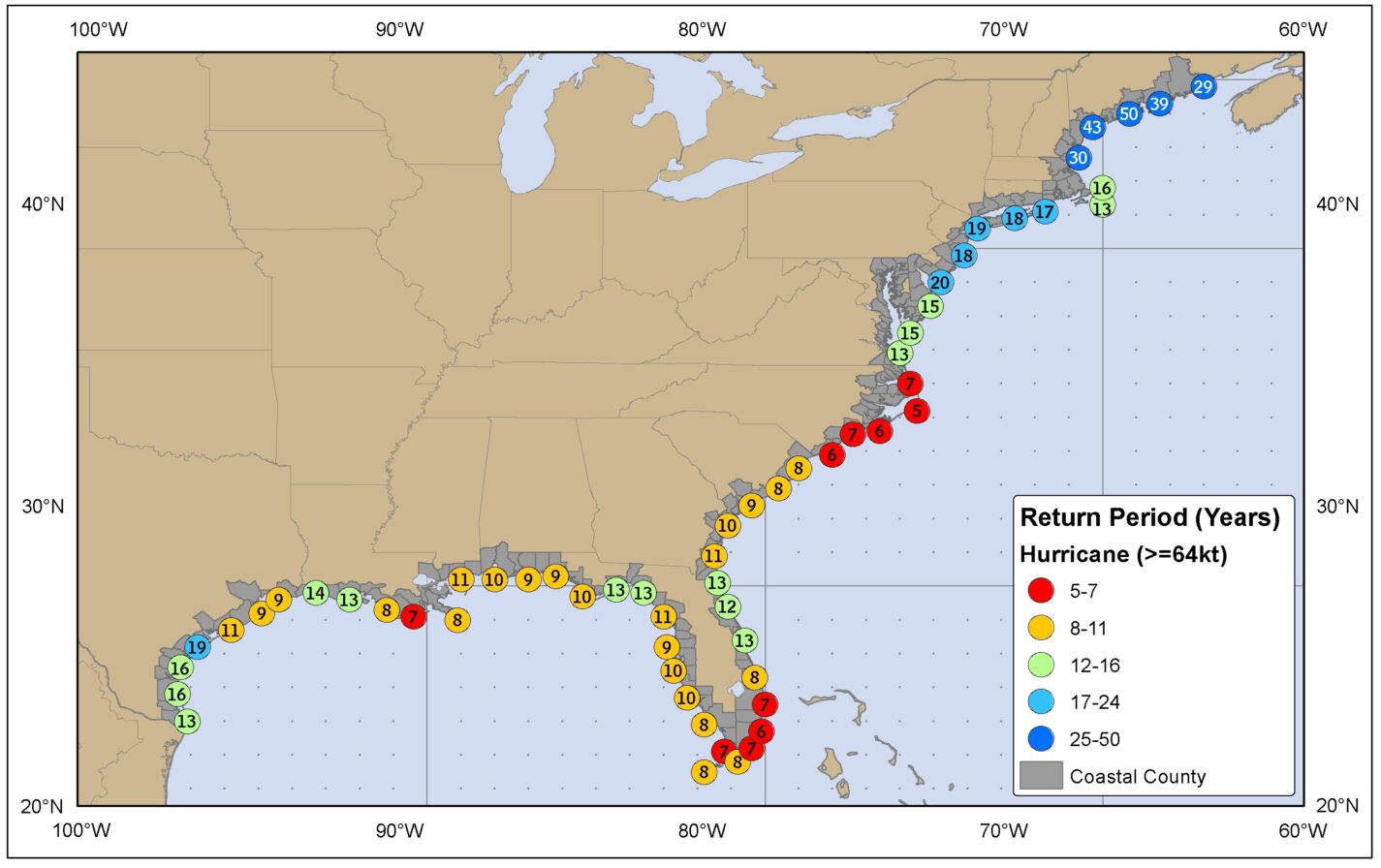An independent evaluation provided to the North Carolina Utilities Commission (NCUC) on August 11 showed what we at the John Locke Foundation have long argued: Offshore wind is not cost-effective. Because of these findings, Duke Energy will not be pursuing offshore wind energy generation off the coast of North Carolina.
A closer look at the report indicates how far offshore wind actually is from being a least-cost source of electricity. This revelation is unsurprising to those familiar with the work of Locke’s Center for Food, Power, and Life (CFPL). For several years, we have compared the cost and reliability of different sources of electricity as we sought to provide modeling to the NCUC, guidance to the General Assembly, and information to the general public on the murky and often confusing issues affecting electricity.
Along with regular research briefs looking into specific issues, our work has included several major policy reports seeking to help policymakers uphold North Carolina’s time-honored, statutory protection of least-cost and reliable electricity provision, even as the Carbon Plan law of 2021 sought to prioritize eliminating carbon dioxide (CO2) emissions from electricity by 2050. Our reports include:
- Energy Crossroads (2021), which showed, “Nuclear energy and natural gas provide North Carolina with reliable, cost-effective pathways to achieve its emissions-reduction goals.”
- Comments (2021) to the U.S. Bureau of Ocean Energy Management, which urged that no action be taken on the proposed wind energy area near Kitty Hawk, citing the higher electricity costs and economic, ecological, and environmental dangers offshore wind energy development would pose.
- Big Blow: Offshore Wind Power’s Devastating Costs and Impacts on North Carolina (2022), a comprehensive report that found, among many other things, that offshore wind energy facilities cost $137.00 to $164.39 per megawatt-hour (MWh), while the state’s nuclear plants cost $21.71 per MWh and natural gas plants generate electricity for $35.83 per MWh.
- An analysis (2022) filed before the NCUC demonstrating that the least-cost and reliable decarbonization plan under the Carbon Plan law would rely on natural gas plants to replace coal generation while transition to a grid of nuclear, pumped hydro, and storage.
- Lighting the Path (2024), which showed enormous costs in pursuing the path to carbon neutrality by 2050 using wind and solar as opposed to nuclear: eight times more new capacity, nine times more new transmission lines, and taking up more than a fifth of the state’s land (7.7 million acres vs. just 15,190 acres for the nuclear scenario).
- Power Plays (2025), which among other things showed how the Carbon Plan’s interim goal of cutting 70 percent of CO2 emissions by 2030 had improperly influenced resource modeling at the NCUC away from least-cost and reliable strictures, boosting expensive wind and solar generation and essentially implementing a carbon tax on natural gas–fired generation after 2034.
Duke’s independent evaluation of offshore wind energy costs: What it found, and what it means
In an August 11 filing before the NCUC, Duke Energy Carolinas and Duke Energy Progress (Duke) delivered the report from an independent evaluator, Power Advisory. Duke was carrying out NCUC orders to complete an Acquisition Request for Information (ARFI), which provided “detailed market information from the three wind energy area (‘WEA’) leaseholders off North Carolina’s coast” — namely, Avangrid Power, LLC; Cinergy Corp.; and TotalEnergies Carolina Long Bay, LLC — which collectively made “eight offshore wind development project [s]ubmissions.”
Power Advisory worked with the NCUC’s Public Staff to provide a reference price by which to evaluate the submissions, which served as the benchmark for evaluating “whether offshore wind generation is cost-effective at this time relative to other available resources.” The finding:
Each project proposal exceeded the Reference Price. Accordingly, the Companies [Duke Energy Carolinas and Duke Energy Progress] do not plan to issue a [Request for Proposal] for procurement of offshore wind at this time.
It is important to note how the reference price was developed. How was the cost derived against which the cost of offshore wind was compared?
It matters because the ARFI report process preceded the July 29 passage of Senate Bill (SB) 266, the “Power Bill Reduction Act,” which eliminated the Carbon Plan’s interim goal of reducing CO2 emissions from electricity by 70 percent by 2030, a goal that was unduly influencing NCUC modeling for future electricity generating resources. Without its removal, this would have cost state ratepayers an additional $13 billion.
Removing the interim goal and its influence on electricity generating resource planning is critical. It means that, as long as the Carbon Plan still makes carbon neutrality by 2050 a requirement — rather than an aspiration that is secondary to least-cost and reliable provision — electricity can indeed be generated through more natural gas power plants until new nuclear can be brought online, just as the CFPL reports have shown to be optimal to preserve reliability while keeping costs as low as possible.
But the ARFI report was conducted while the interim goal was still in place, meaning that the reference price could be determined only from a “clean energy” resource — so it was based on the equivalent amount of “solar generation plus battery energy storage.”
New natural gas and nuclear are, all things considered, less expensive than new wind and solar resources, as the following chart, which was part of the CFPL’s comments to the NCUC, showed:
More than fuel costs: The different costs facing electricity generating resources

So the comparison offshore wind failed against was with the second-most expensive possible form of electricity generation.
New natural gas and nuclear plants are also far, far more reliable. As compiled by energy modelers Isaac Orr and Mitch Rolling, here is how the various types of power plants compare in terms of capacity values (i.e., reliability) as measured by regional transmission organizations and Duke Energy:
Capacity values of power plants, as measured by Regional Transmission Organizations and Duke Energy

Source: Orr and Rolling
The report also lists several new factors contributing to greater uncertainty for the viability of offshore wind generation. They include President Donald Trump’s January 20 executive memorandum stopping new offshore wind lease activity and reviewing federal permitting and approval of all existing wind energy projects, certain provisions in the “One Big Beautiful Bill Act” limiting federal tax credit eligibility for wind and solar facilities, Trump’s July 7 executive order to the Secretary of the Treasury to enforce the removal of those tax credits, and a general “[e]xposure to geopolitical risk and trade tariffs affecting key supply chain inputs.”
More reasons why not building offshore wind facilities is good news for North Carolinians
Beyond cost and reliability, many other reasons underscore why Duke’s decision to back away from offshore wind energy is a welcome outcome:
Economic issues
- Offshore wind’s costs and unreliability would worsen energy poverty, which is already a problem in North Carolina
- Its impacts would harm job creation and economic growth, especially in Eastern North Carolina
- It would pose severe impacts on North Carolina’s coastal fishing industry
- Its massive turbine arrays and flashing lights would also disrupt North Carolina’s other major coastal industry: beach tourism
Offshore wind turbines would be North Carolina’s tallest man-made structures

Environmental issues
- Offshore wind threatens irreparable devastation to North Atlantic right whales as well as to other critically endangered or threatened marine animals and avian species
- In 2024, three dead whales in three days washed ashore near offshore wind energy development areas off the coasts of Virginia and North Carolina — part of 11 total for the year
- Wind power, onshore and off, already poses serious and growing problems with disposing of “forever waste” from blades
- Offshore wind generation is unable to yield any measurable or palpable difference in climate change

Source: “Thrown to the Wind”
Other issues
- Offshore wind energy facilities, with their large arrays of towering turbines, can interference with military training and operations and compromise national defense
- They also threaten severe interference with marine vessel radar, endangering mariners’ lives
- Placing all these turbines in North Carolina’s uniquely hurricane-prone waters is untested and would be foolhardy, given the ecological harm posed by just one broken turbine blade
Estimated return period in years for hurricanes passing within 50 nautical miles of various locations on the U.S. coast

Source: National Hurricane Center
For all these reasons, Duke’s decision is very good news.
The post Great news: Duke has decided to stop pursuing offshore wind first appeared on John Locke Foundation.
Click this link for the original source of this article.
Author: Jon Sanders
This content is courtesy of, and owned and copyrighted by, https://www.johnlocke.org and its author. This content is made available by use of the public RSS feed offered by the host site and is used for educational purposes only. If you are the author or represent the host site and would like this content removed now and in the future, please contact USSANews.com using the email address in the Contact page found in the website menu.








